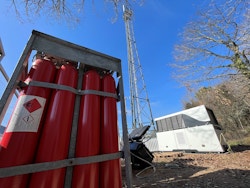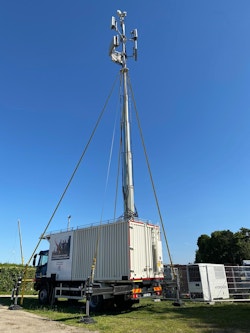We often forget that our telecom networks are very energy-intensive, especially following the deployment of 5G. It is also sometimes necessary to operate relay antennas disconnected from the electrical network, to ensure satisfactory coverage of inaccessible areas, or, conversely, to carry out work on the electrical network without disconnecting the antennas! Finally, during sporting or cultural events, which bring together many customers in the same place, the mobile telephone networks are heavily used and can sometimes saturate. It is then necessary to increase the capacity of the telecom network with the temporary installation of additional antennas to make it possible again to make and receive calls, broadcast live content on social networks or even browse the internet.
EODev's GEH₂® can support networks, both telecoms and electricity, in these kinds of circumstances — as a conventional diesel generator could do, with the major difference that the GEH₂® will not make noise and will not emit any pollution: no greenhouse gases, no fine particles, no odors or smoke, only heat and water! Two French telecom operators, Bouygues Télécoms and Orange, thus tested our low-carbon solution to ensure continuity of service in all circumstances.
The former has developed B-Trucks, an innovative and flexible solution to cover areas that maybe very crowded temporarily, such as during festivals. These are trucks equipped with an antenna that can swing outside, on the roof, and deploy up to a height of almost 20 meters. Once in place, the antenna complements the coverage already available on site. Wherever an event is taking place, the 5G B-Trucks can be supplied with electricity through the use of a hydrogen fuel cell if the electricity supply is not possible or good enough.
This innovation, developed by Bouygues Energies et Services (BYES) / Equans with the assistance of EODev for the power supply, not only reduces CO₂ emissions by 80% but also reduces the noise level (-15 dB) compared to a diesel genset, and does not disturb spectators with the presence of nauseous fumes. This solution, implemented on the 5G B-Truck deployed at the Longchamp racecourse for the concerts scheduled for last summer, made it possible to avoid the emission of nearly 11 tonnes of CO₂ over a period of 6 weeks, i.e. the equivalent of 87,000 km traveled by plane!



